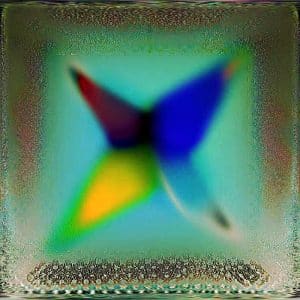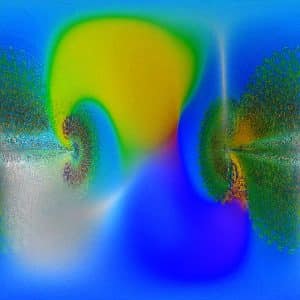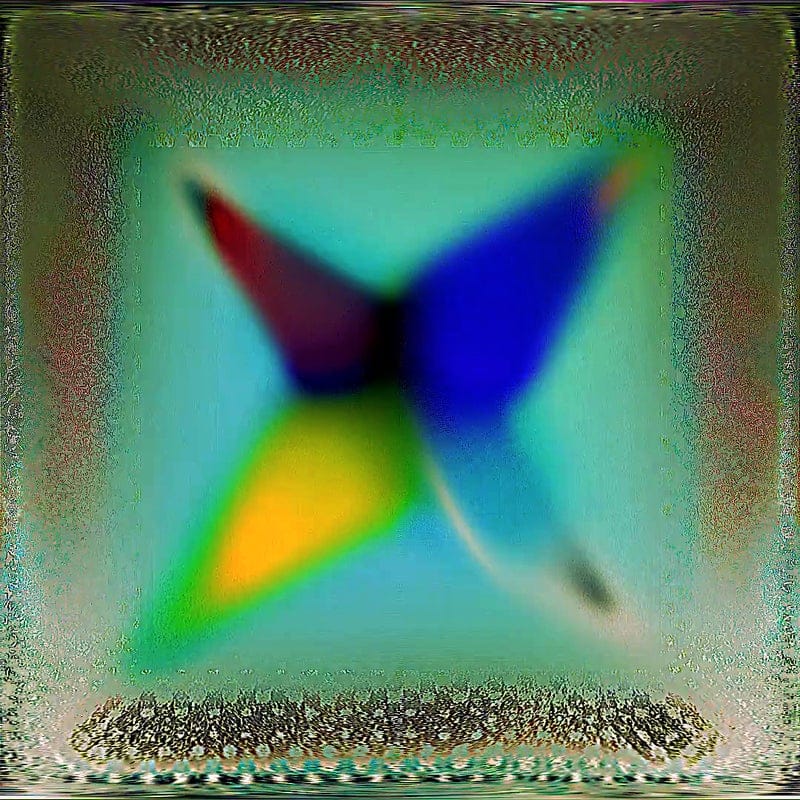Recently, Richard Garet, a multimedia artist based primarily in New York City, opened a solo exhibition titled “Frame Compositions” with 1stDibs NFT marketplace. The eponymous show exhibits 28 vibrant NFT works and explores the relationship between color, light, surface and form. Garet’s practice encompasses sound installations, performance, computer applications and other mediums. I asked the artist 10 questions about his life and career to learn a little more about him.
You have an international background. Where did you grow up? Did your early life involve art?
I was born in Montevideo, Uruguay, in 1972. I lived in Caracas, Venezuela, from 1986 till 1996. Since February 1996, I have been based in New York City, and I currently split my time between New York and South Florida. My early life did not involve art profoundly. Although, I acquired a strong sensibility to sound and music.
Your career spans 20-plus years in physical art and, most recently, NFTs. Do you still create physical paintings and installations?
I started artistically around 16 years of age and consistently as an artist since the 1990s. Yes, the core of my practice is work for physical spaces, so I still make work that way. I have not made a painting traditionally speaking since the mid-2000s, but I have made much mixed-media work and digital paintings on canvas, photographs and more. I have always contemplated the idea that perhaps one day I would paint again. In a way, the essence and aura of painting is very present in my work today. I learned to make art first as a painter and to look at things as a painter, and that is something really hard to change. I never meant to change it either.
How did your 2013 solo exhibition at the Museum of Modern Art in New York come about? How were you approached about that?
At the time that the MoMA was selecting the artists for the show, I was getting ready for a solo exhibition in a New York City art gallery of just sound art pieces. Right before then, my studio visit happened with the MoMA’s curator for the exhibit, Barbara London, and she selected the main piece that was going to be part of the solo exhibition for “Soundings: A Contemporary Score,” which was the MoMA exhibition of sound art from August to November of 2013.

Tell us about your time as a musician. Was that before or after your art career?
I started playing as a musician very early, and I took part in many bands. I realized that I was not interested in tonality or harmony, meaning that I was not interested in the idiomatic qualities or characteristics of music and in constantly repeating a repertoire. That, in fact, I was interested in sound as a material. I made those connections in art school, learning about the developments and intersections of art and music going as far back to the 19th century. Chronologically speaking, becoming a musician and sound artist [happened] in parallel with becoming a visual artist. But back then, to me, it was unheard of such a thing called sound art. There was not really a divide, but, in retrospect, it feels more like an intertwined development.
Is working with visual imagery more or less exciting to you than working with physical mediums?
In the same way I work with image making, I have been developing bodies of work that are sculptural objects, multichannel sound installations, listening compositions and performing live. The ideas are always the same, which is material as sound and the ontological investigation of sound. I have never established a medium or media hierarchy in my work. It unfolds naturally and shifts back and forth from one to the other. Often I compare it to a situation where someone speaks more than one language and can switch from one to the next without even noticing it.
What was the last physical or virtual exhibition you saw that impressed you?
In January 2020 while I was in Berlin to exhibit at the CTM Festival, I was blown away by this installation by artist Cevdet Erek [at Hamburger Bahnhof].

“From that moment on,
it felt quite liberating,
and I have not stopped ever since.”
What are you hoping to see in the next five years from NFT spaces, especially with regard to digital art?
Tough question. I have no idea. However, I just hope that it keeps improving and that technical limitations start to become more accessible and possible. Much happens between what one makes and what one has to do to make it fit as an NFT. I think once the internet allows for [less limitations], it would be quite great. But it’s much more complicated than that. I guess I’m just optimistic and hopeful.
Looking now to your latest project, “Frame Compositions” (2021), what artists were you studying while creating these works? If none, is your source of inspiration purely from observing the physical world?
I do not look at other artists to make my work. Maybe [that was true] 15 to 20 years ago when other artists’ voices excited me in my work, but it has been such a long time. In my work, I go deep into its process, and I get lost in it until it starts to come together. So choices are always analogous to what’s in front of me and responsive to it in an empirical way. I just got really fixed on the [framed squares].
This might be a hard one, but if you could pick one work out of the entire series to keep for yourself, which would it be?
Not hard at all. I’ll give you three. But there are more. Sunflower, Head — For Guston and Techno Disc.
If you could be quoted as saying one thing about your artistic practice, what would it be?
My work is born from a state of discovery, process and progress. It is initiated by identifying the potential in something that activates the imagination and triggers the desire to create. From this initial movement begins the exploration of possibilities and the spontaneous progression without any preconceived notions or desired outcomes. The process itself is like a portal for me, and the result presents itself as a portal for others.
